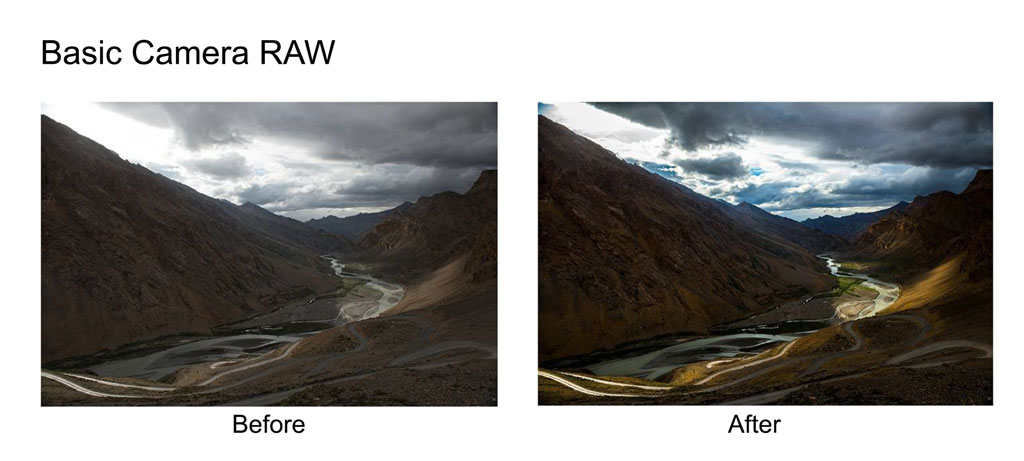Photographs are stylized interpretation of reality with each photographer’s imagination. The moment we take pictures, we convert a 3 dimensional object to 2 dimensional images. First conversion takes place at that very moment. There are many debates whether post processing should be done or not, let’s discuss the arguments for and against the post processing.
Post Processing was always there. It is not a creation of digital culture. Many techniques were used during the old days to make image visually more appealing.
- Different Contrast Grade Photo Paper.
- Changing the color temperature by changing the filter pack.
- Changing the contrast and exposure by changing the time that paper was exposed.
- Dodge and Burn.
- Masking and Unsharp Mask.
- Contrast Masking by sandwiching the negative with unexposed film.
- Retouching including Pencil and Dyes.
Now that the medium has changed, do we need post processing to improve image quality? To understand this, let’s understand the file formats.
JPEG or JPE: Stands for Joint Photographic Expert Group developed in 1980. This is a lossy format, it reduces the size of the file by blending redundant image pixel. As the image is compressed, blurriness appears around the edges of the subject. Most cameras will show JPEG image quality settings of something like a low (high compression), fine (moderate compression) and superfine (low compression). The only advantage of this format is that the file size is low and can be used for web application or emailing. However, the biggest drawback of this format is it compresses the file size by removing the vital information which can never be recovered later.
RAW: This is the loss less image format offered by the digital camera. Most liked format among the photographers as it provides enough raw information to play around in the post processing. The file size is comparatively high and needs software to open and process which is easily available. Since this file has lots of information, scope of post processing is very high and can result in stunning quality.
TIFF: Stands for Tagged Image File Format. This is a loss less image format as no pixels are modified in this image. This generally results for very large size files. This is a preferred file format for high end printing operation or data preservation. The only drawback of this file format is the high file size.
Now let’s see how a camera differentiates these file formats.
JPEG vs. RAW In Camera
In Camera
RAW to TIFF to JPEG
Bit depth: Bit depth refers to the color information stored in an image. The higher the bit depth of an image, the more colors it can store. The simplest image, a 1 bit image, can only show two colors, black and white. That is because the 1 bit can only store one of two values, 0 (white) and 1 (black). An 8 bit image can store 256 (28) possible colors, while a 24 bit image can display about 16 million (224) colors. A JPEG records 8 bit color information whereas a RAW file can record up to 14 bit color information.
Arguments Against / For Post-Processing
Against: Real or Unreal, Fake
For: Creative Freedom. Present the photographer’s vision, not what the camera sees. Make the picture aesthetically more attractive. The only medium of Post-Processing has changed.
Bottom Line is: Context is important.
Scope / Various Techniques in Post-Processing – Lets see some post processed images.







 A camera RAW has a lot to offer. Simply in-camera processing do not justify the immense potential of today’s digital camera. If you want to get maximum out of your camera, post processing is must. Knowledge of post processing is not enough; you need to have a creative vision to apply it to your image from an artist’s point of view. Therefore, the term “Photographer” is gradually changing to “Photo Artist”. A new generation of photographers are growing fast and they are called Photographer + Retoucher.
A camera RAW has a lot to offer. Simply in-camera processing do not justify the immense potential of today’s digital camera. If you want to get maximum out of your camera, post processing is must. Knowledge of post processing is not enough; you need to have a creative vision to apply it to your image from an artist’s point of view. Therefore, the term “Photographer” is gradually changing to “Photo Artist”. A new generation of photographers are growing fast and they are called Photographer + Retoucher.
_______________________________________
